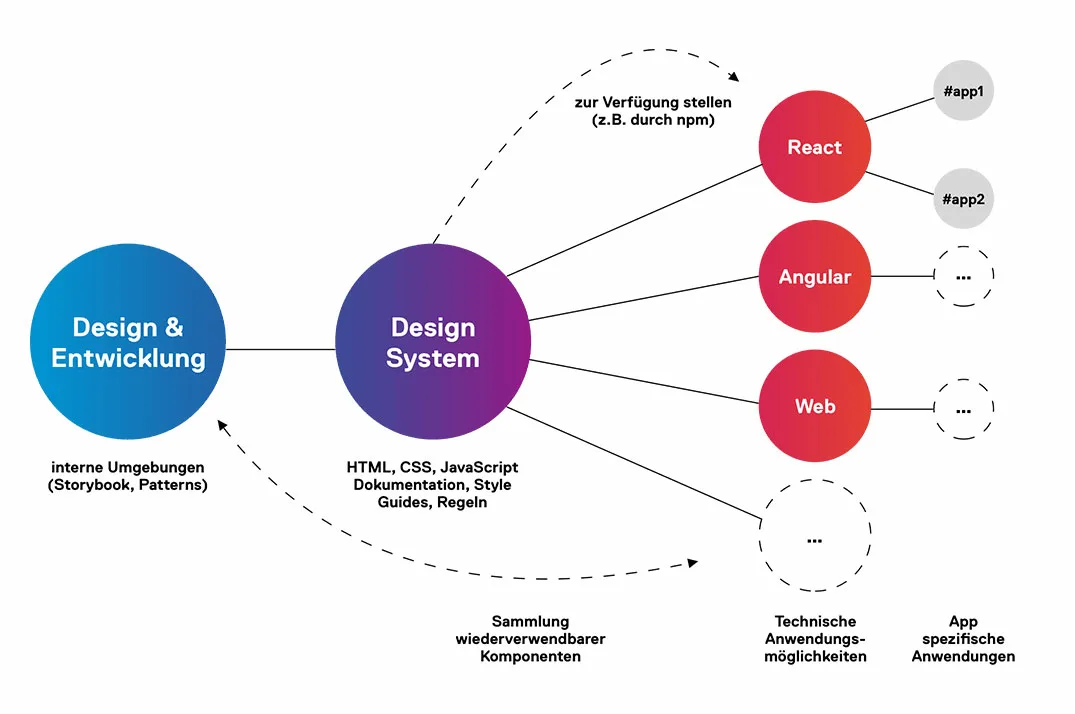Technology
Design systems – CX game changers?
Technological advances and the associated rise in the number of different media and devices places new demands on digital product design and software development. Designs need to be flexible and scalable yet remain consistent across all technical environments. Companies that succeed in implementing this level of consistency in their customer experience enjoy vast improvements in brand recognition. So, what’s the secret to achieving consistent experiences across platforms?

The vision: consistent user experiences
One answer may lie in design systems. A design system is a systemic approach that helps manage design on a large scale using a set of standards (tools). At the same time, it is devised to ensure consistency across all channels. Designers and developers use the same system and work in tandem to create the most efficient and coherent digital environments possible.
Constantly developing UX, UI and front-end components requires an awful lot of time, nerve and ultimately money. By contrast, design systems can be compared to something we all know and love from childhood: Lego. A whole set of efficient, fully functional components just need to be connected – only this time digitally. In other words: Developers and designers work together to create a model kit and entire companies benefit by retrieving exactly the designed code snippets they require for their application. From application rules to conduct, everything is defined in advance, meaning launching new applications costs a fraction of the price of regular developments.

The bridge between strategy, design and development
Developers often code for hours on end, designers work on cutting-edge creations and strategy teams come up with forward-looking concepts. All this is possible with design systems. But now they won’t need to start from scratch each time. Along with design consistency, design systems can also reduce development and communication costs while improving the quality of your code. Digital experiences are constantly changing. In order to keep up, countless websites, landing pages, apps and platforms need to be manually updated. One key advantage offered by design systems is the global implementation of changes.
Something less tech-savvy stakeholders can particularly benefit from. Design systems make sure that all stakeholders speak and understand the same visual language. All stakeholders can access previously complex code. Cross-team product development is made possible with a focus on content as opposed to the technical implementation of a product. As a result, design and development teams can refine individual components step by step, build features and release them globally.

Leading technology firms such as Apple, IBM and Porsche have already launched their own design systems on the market and offer UX, UI and code from a central repository with all design guidelines for their digital applications with a consistent design. Small companies, in particular, and companies that don’t view digitalisation as part of their DNA often still go without. However, the following factors should decide whether a company uses a design system. As explained above, design systems can also benefit less tech-savvy stakeholders.
In light of all the advantages they offer, you may be wondering why all companies don’t rely on design systems? If size is not the only decisive factor, what else plays a role?
Companies with several different digital platforms or companies that use a large number of digital end channels stand to benefit greatly from design systems. Designing becomes a one-time job. Afterwards, employees can simply use the relevant elements of the kit whenever they need them. Individual teams create consistent-looking products that function uniformly and can be updated on an ongoing basis. A design system acts as a living, breathing style guide that no one needs to adapt (beyond the design system team). It manages itself. In this way, a design system is the single point of truth. That being said, the initial work, cost and
time involved in setting up a design system may pay off less for companies with ewer digital platforms.
With this in mind, the question of whether design systems are game changers for CX can only really be answered on an individual basis. Above all, companies need to take a critical look at how much time their teams currently invest in redundant tasks. They should also weigh up how many applications such as websites and other digital platforms are currently in use and will continue to be used in the future. If this number is high, a design system may be worth considering; otherwise, an optimal CX can be ensured through conventional approaches.

As a full stack developer, Patrick primarily works on comprehensive web solutions based on Pimcore and develops cutting-edge CX solutions for our customers. What sets Patrick apart? A natural at developing human-computer interfaces, Patrick uses his expertise to unite creation, UX and development.
